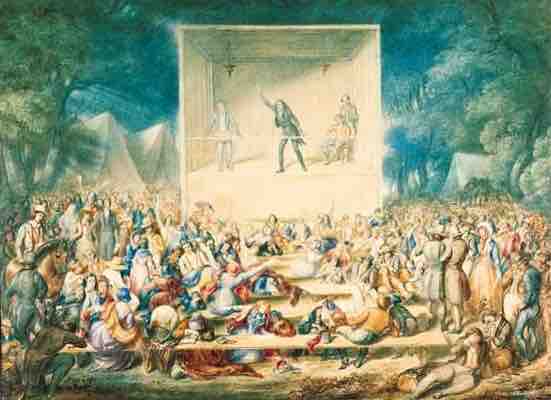Revivals on the Frontier
In the newly settled frontier regions, the revivals of the Second Great Awakening took the form of camp meetings. These meetings were often the first experience settlers had with organized religion. The camp meeting was a religious service of several days' length involving multiple preachers. Settlers in thinly populated areas would gather at the camp meeting for fellowship. The sheer exhilaration of participating in a religious revival, with crowds of hundreds and perhaps thousands of people, inspired the dancing, shouting, and singing associated with these events.
The revivals typically followed an arc of great emotional power and emphasized the individual's sins and need to turn to Christ, and subsequent personal salvation. Upon their return home, most converts joined or created small local churches, which resulted in rapid growth for small religious institutions. With the effort of such leaders as Barton W. Stone (1772–1844) and Alexander Campbell (1788–1866), the camp meeting revival became a major mode of church expansion for denominations such as the Methodists and Baptists.

Methodist camp meeting
Camp meetings were multi-day affairs with multiple preachers, often attracting thousands of worshippers. They were an integral part of the frontier expansion of the Second Great Awakening.
One of the early camp meetings took place in July 1800 at Gasper River Church in southwestern Kentucky. A much larger gathering was later held at Cane Ridge, Kentucky, in 1801, attracting perhaps as many as 20,000 people. Numerous Presbyterian, Baptist, and Methodist ministers participated in the services. The Cumberland Presbyterian Church emerged in Kentucky, and Cane Ridge was instrumental in fostering what became known as the "Restoration Movement," which was made up of nondenominational churches committed to what they saw as the original, fundamental Christianity of the New Testament. They were committed to individuals achieving a personal relationship with Christ.